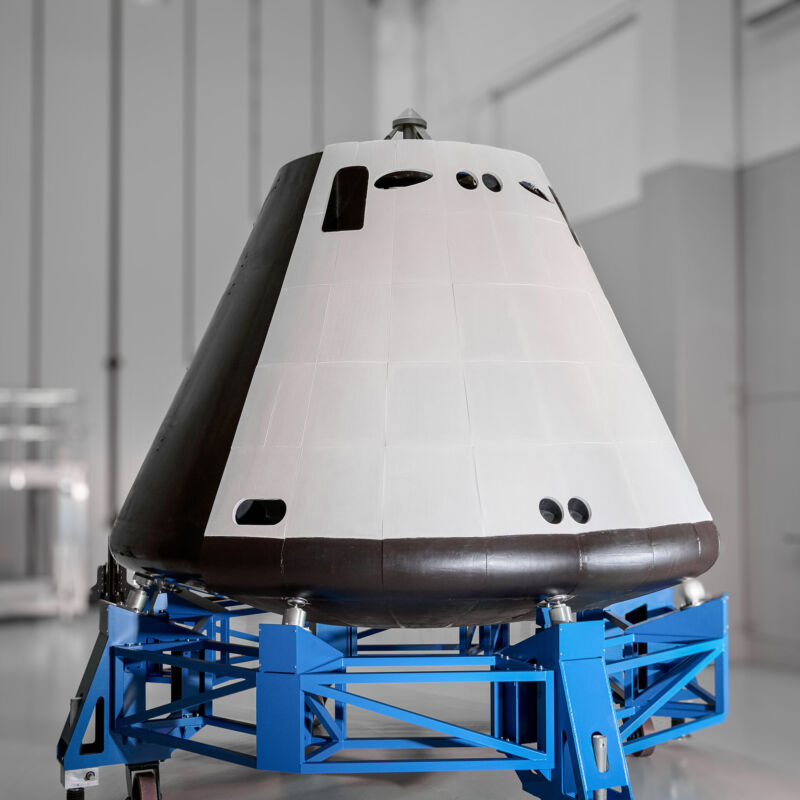
Thales Alecia Space
The European Space Agency has awarded initial contracts to a German-based startup and one of the continent’s established aerospace companies to develop spacecraft to ferry cargo to and from space stations in low-Earth orbit.
ESA announced the two 25 million euro ($27 million) contracts May 22. The Exploration Company, co-located in France and Germany, and Thales Alenia Space of Italy beat out four other companies in the competition for ESA funding through the LEO Cargo Return Service program.
These contracts will run for two years, until June 2026. In this first phase of the program, The Exploration Company and Thales Alenia Space will refine their concepts, mature technologies, and focus on requirements for their cargo vehicles. ESA plans to award contracts for the second phase of the LEO Cargo Return Service program in 2026, eyeing a round-trip demonstration flight to the International Space Station (ISS) in 2028.
The Exploration Company, founded in 2021, says its Nyx cargo transporter could fly to the space station as soon as 2027. Thales Alenia Space’s demonstration mission is targeted by the end of 2028, the company said in a statement. The Exploration Company plans to fly a sub-scale reentry vehicle on the first flight of the European Ariane 6 rocket in July. Thales Alenia Space hasn’t built a reentry craft, but it manufactured pressure shells for several modules at the ISS.
ESA’s requirements stipulate that the commercial European cargo vehicles must be able to deliver 4 metric tons of equipment to low-Earth orbit and return 2 metric tons to Earth.
ESA originally wanted to select three companies to proceed with the European cargo program. Samantha Cristoforetti, an ESA astronaut who leads the procurement effort, said only the two winners “presented a combination of work plan and financing scheme that were suitable for the purposes of this call.”
Cristoforetti told Ars that ESA received “six valid proposals” from European industry. She declined to identify the other competitors, but two of the proposals were believed to come from ArianeGroup and Rocket Factory Augsburg.
A partial commitment
Representatives from ESA’s 22 member states met in Seville, Spain, last November to decide on several priorities for the space agency. The meeting produced several key decisions. The member states agreed to adopt a more commercial model for buying launch services from European rocket startups in the future, although in the near term, ESA remains all-in on the long-delayed Ariane 6 and Vega C rockets.
European governments also signed up to the first phase of the LEO Cargo Return Service, but the initial 25 million euro contracts signed with The Exploration Company and Thales Alenia Space will go only so far. At its next high-level budget meeting late next year, ESA will ask its member states for the rest of the funding needed to carry the program through the demonstration flights to the ISS.
ESA works in budget cycles that typically run for three years. This helps ensure stable funding for the agency’s programs, but it can stand in the way of the kind of fast-paced change emblematic of startup culture. Nevertheless, Josef Aschbacher, ESA’s director general, won approval from his member states in November to use some of ESA’s funding to partner with industry on commercial cargo vehicles.
“We want to be on the space station around ’28,” Aschbacher said in a press briefing on May 23. “We have to now evaluate in detail the technical proposals and the capabilities, but this is extremely fast, and is actually faster than some of our competitors overseas managed to build such a vehicle.”
Aschbacher seems serious about making ESA more nimble. However, the agency’s budget and direction are set by European government ministers through the prism of parochial domestic politics.

